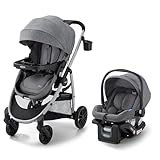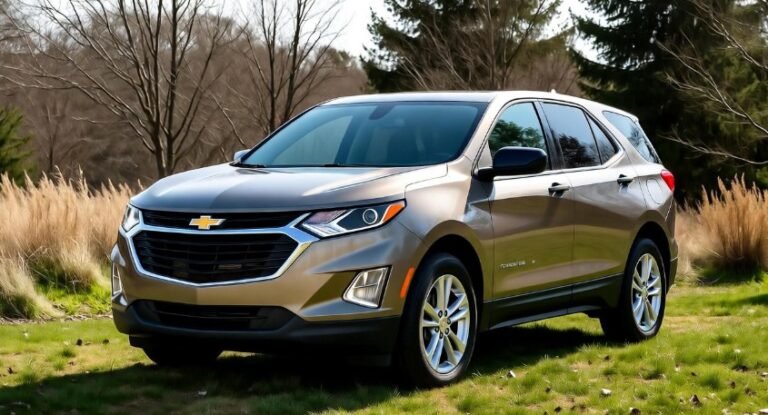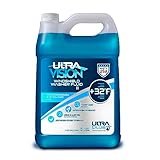Window Tint Percentage Examples [Advanced Visualization Tool Included]
![Window Tint Percentage Examples [Advanced Visualization Tool Included] 1 Window Tint Percentage Examples [Advanced Visualization Tool Included]](https://aautomotives.com/wp-content/uploads/2025/10/Window-Tint-Percentage-Examples-Advanced-Visualization-Tool-Included.jpg)
Choosing the perfect window tint percentage can feel like walking into an art gallery without knowing where to look first. You might want your car or office windows to look sleek and stylish, or maybe you just want more privacy and better temperature control. But how dark should you go? That’s where understanding window tint percentages becomes essential.
In this guide, we’ll dive deep into window tint percentage examples, explore what each percentage means, and show you how to visualize the results using our advanced tint visualization tool. Whether you’re tinting a car, home, or office, this guide will help you see exactly how different percentages look — before you even buy the film.
From 0% limo tints to 90% light tints, we’ll break down what each option offers, how legal they are in different regions, and what they look like in real life. You’ll also learn how tint affects light transmission, heat reduction, UV blocking, and privacy. So, let’s get started with this step-by-step exploration of window tinting clarity, color, and comfort.
Understanding Window Tint Percentages: What Do the Numbers Mean?
![Window Tint Percentage Examples [Advanced Visualization Tool Included] 2 Understanding Window Tint Percentages What Do the Numbers Mean](https://aautomotives.com/wp-content/uploads/2025/10/Understanding-Window-Tint-Percentages-What-Do-the-Numbers-Mean.jpg)
Before jumping into the visualizations, it’s important to understand what those numbers — like 20% tint or 70% tint — actually represent. The percentage refers to Visible Light Transmission (VLT). VLT measures how much visible light can pass through your tinted glass.
For example:
-
5% tint means only 5% of visible light passes through (extremely dark).
-
50% tint allows half the light to pass through (moderately dark).
-
70% tint is very light and almost clear.
Here’s a simple breakdown of how tint percentages affect visibility and privacy:
| Tint Percentage | Light Transmission | Visibility Level | Common Use |
|---|---|---|---|
| 5% | Very Low (5%) | Extremely dark | Limo & Rear Windows |
| 20% | Moderate-Low (20%) | Dark but usable | SUVs & Side Windows |
| 35% | Medium (35%) | Balanced darkness | Legal Front Tints |
| 50% | High (50%) | Light tint | Comfort & Glare Reduction |
| 70%+ | Very High (70%–100%) | Nearly clear | Factory Standard Glass |
When you look at this chart, you can think of VLT like sunglasses — the darker they are, the more they block sunlight. But the key is finding that balance between privacy, visibility, and legality.
Basic Window Tint Visualization Tool: See It Before You Tint It
Imagine being able to test how different tint percentages look — before spending a single dollar. That’s exactly what our Basic Window Tint Visualization Tool does. It lets you select a tint percentage (1% to 100%) and instantly see how dark or light it appears.
This simulation helps you understand how much natural light will enter your car, home, or office after tinting. For instance:
-
At 10%, you’ll notice your windows look almost black from the outside.
-
At 35%, the windows will appear slightly shaded — stylish, yet functional.
-
At 70%, they’ll look nearly clear, just enough to cut glare and heat.
The tool replicates the look of standard black tint film, so you can compare your preferences visually. It’s perfect for beginners who want to test different percentages and visualize real-world lighting effects before making a decision.
Advanced Tint Percentage Visualization Tool: Play with Color and Light
Now, let’s talk about something even cooler — the Advanced Tint Percentage Visualization Tool. This upgraded version goes beyond black film and lets you experiment with different colors, tint intensities, and comparisons.
Here’s how it works:
-
Select a Color: Choose from a palette or input a HEX/RGB value (for designers and detail enthusiasts).
-
Adjust Tint Percentage: Use a slider to see how different levels of tint affect brightness and hue.
-
Compare Colors: Add multiple shades side-by-side to find the perfect match.
For example:
-
A #620711 (dark red) tint at 50% gives your car or window a bold, sophisticated look.
-
A #2def85 (mint green) at 50% provides a refreshing, modern vibe.
-
A #d476a9 (soft pink) tint adds personality without blocking much light.
This tool is not just for car enthusiasts. Designers, architects, and homeowners use it to visualize how different tints interact with natural light and décor. If you’re working on an aesthetic or functional window design project, this visualization tool can save you hours of guesswork.
Real-Life Examples: How Tint Percentages Look on Cars
Numbers are one thing, but real-world visuals tell the full story. Here’s what different window tint percentages look like when applied to cars in real life:
-
5% Tint: Commonly called “limo tint,” this gives a completely blacked-out look. Perfect for privacy, but it’s tough to see through at night.
-
20% Tint: Popular among SUV owners. It provides privacy without total darkness, letting enough visibility for safe driving.
-
35% Tint: One of the most balanced choices — sleek, modern, and usually legal for front side windows in many states.
-
50% Tint: Great for cutting glare and heat while keeping a bright interior. Ideal for family cars or offices with lots of sunlight.
-
70% Tint: Almost clear, this one is preferred by drivers who want UV protection without changing visibility or aesthetics.
When viewed side-by-side, you can clearly see how tint percentage affects both the appearance and function of the glass.
0% to 10% Tint: The Darkest Side of Privacy
A 0% window tint is essentially blackout glass. It allows no light to pass through, which makes it ideal for specialized commercial or law enforcement vehicles. However, for everyday use, it’s not practical — or legal in most states — since it severely limits visibility.
Moving up slightly, 3% to 10% tint is still extremely dark. This range blocks 90%–97% of visible light, giving your vehicle or space the ultimate privacy. People outside can barely see in, even during daylight. However, visibility from inside can also be challenging at night.
Most states in the U.S. prohibit such dark tints for front windows, except in a few like Michigan, where darker shades are allowed for specific conditions. In homes or offices, though, a 10% tint might be used for heat reduction and glare control in sun-facing rooms.
If you crave total privacy and don’t mind a darker interior, this range gives that luxurious “executive” look — but with limitations in practicality.
15% to 25% Tint: The Sweet Spot for Privacy and Style
When it comes to a balance between visibility and privacy, 15%–25% window tints often steal the show. They block 75%–85% of incoming light while still allowing drivers to see outside fairly well during daylight.
These tints are quite popular for rear windows and SUVs, giving that classy dark-glass look without being completely opaque. In dim lighting, the interior remains somewhat visible, but only if someone looks closely.
For example:
-
15% tint looks almost black but still offers some clarity.
-
20% tint provides privacy and a professional look.
-
25% tint strikes a beautiful balance — elegant, functional, and still usable for daily driving.
However, note that these percentages are illegal for front windows in most states, except for places like Michigan, Montana, and New Mexico. So always check your local window tint laws before application.
If you want that “luxury car aesthetic” without sacrificing too much practicality, this is your ideal range.
30% to 35% Tint: The Most Popular Everyday Choice
The 30% to 35% tint range is the golden middle ground — not too dark, not too light. It provides a noticeable reduction in glare and heat while maintaining visibility. This is also one of the most legally accepted tint ranges across the U.S.
Drivers often choose 35% window tint because it offers:
-
A sleek, polished look that complements any car color.
-
Enough privacy for comfort but clear visibility at night.
-
Significant UV protection and heat reduction.
A 35% tint allows 35% of light to pass through and blocks 65%. It’s great for protecting interiors from sun fading while making your ride look sharp.
If you want something stylish, legal, and practical — 35% is your best bet. Many manufacturers even use it as a factory tint level for rear windows, which makes it blend naturally with other factory-installed glass.
40% to 55% Tint: Comfort, Clarity, and UV Protection
When you want comfort more than privacy, 40%–55% tints are ideal. They allow more natural light while still blocking harmful UV rays and reducing glare.
For instance:
-
40% tint balances sunlight control with a clean, professional appearance.
-
50% tint is perfect for drivers who prefer clear visibility but want to reduce interior heat.
-
55% tint is almost invisible to the eye but still functional for UV protection.
These percentages are legal in most U.S. states, making them popular for both cars and commercial buildings.
Here’s the real-world benefit: when you drive under strong sunlight, a 50% tint can make a massive difference in how your cabin feels. It can reduce the heat buildup, minimize dashboard fading, and even help your AC system work more efficiently.
For people who don’t want a “tinted” look but still crave the comfort, this range is the most sensible choice.
60% to 90% Tint: Subtle Shades for Natural Light Lovers
If you love bright spaces but still want protection, 60% to 90% window tint percentages are for you. These tints are barely noticeable to the eye, but they work behind the scenes to block UV radiation and mild glare.
For example:
-
70% tint allows plenty of sunlight while keeping interiors cooler.
-
80% tint is often used for front windshields to minimize glare without affecting night vision.
-
90% tint is virtually clear — offering a “factory glass” feel but with modern UV-blocking technology.
These lighter tints are legal almost everywhere in the U.S. except in a few states like New Jersey and Vermont, which have stricter visibility rules.
You’ll often find 70% tints in luxury sedans and office glass panels, where aesthetics and openness matter just as much as function.
100% Window Tint: Maximum Clarity or No Tint at All?
Interestingly, 100% window tint is technically no tint at all — it allows all visible light to pass through and blocks nothing. While it might seem redundant, knowing this helps you understand the spectrum of options available. This is the standard for factory-clear windows and is the maximum allowable transparency on front windows in all U.S. states.
The practical use of 100% “tint” is more relevant for home or office glass, where visibility and natural light are priorities. While you won’t get privacy or significant glare reduction with 100% light transmission, you still gain the ability to protect interiors with UV-blocking coatings. Think of it as a subtle upgrade — you maintain full visibility but reduce long-term damage from sunlight exposure.
Legal Considerations: Understanding Window Tint Laws
Before committing to a window tint, understanding tint legality is crucial. In the U.S., state laws dictate how dark or light your front and rear windows can be. This is measured using Visible Light Transmission (VLT) percentages.
Some important highlights:
-
Front Side Windows: Most states restrict tints darker than 35%, with exceptions like Michigan allowing lower percentages.
-
Rear Windows: Generally more flexible; darker tints (5%–20%) are common and legal in most states.
-
Windshields: Often only the top strip (sun visor band) can be tinted; full windshield tinting is illegal in most states.
Legal compliance ensures safety, avoids fines, and prevents insurance complications. Even for homes and offices, check local building codes to ensure your tint percentage meets energy efficiency and daylighting regulations.
Home and Office Tinting: Beyond Cars
Window tinting isn’t just for vehicles. Applying tints at home or in the office can drastically improve comfort, reduce energy bills, and increase privacy.
-
Heat Reduction: Tints block up to 60–80% of solar heat, reducing air conditioning costs.
-
UV Protection: Prevents furniture, flooring, and artwork from fading.
-
Privacy: Darker tints shield interiors from prying eyes while still letting natural light in.
Using our Advanced Tint Visualization Tool, you can simulate how different percentages affect room lighting. For instance, a 20% tint might be perfect for a sunroom, reducing glare while maintaining brightness. Meanwhile, 50%–60% tints are great for office windows facing direct sunlight, balancing comfort and openness.
How to Use the Advanced Window Tint Visualization Tool Effectively
Visualization tools are game-changers when deciding on tint percentages. Here’s how to get the most out of them:
-
Select Your Color and Percentage: Start with your preferred tint shade (black, gray, or colored) and adjust the slider to see how dark it will appear.
-
Compare Multiple Options: Test different tints side by side to see which percentage provides the right balance of privacy, aesthetics, and visibility.
-
Simulate Real-World Conditions: Tools often allow you to replicate daylight, night-time, or artificial lighting to observe how tints perform under different scenarios.
-
Adjust Gradually: Small changes, like moving from 35% to 40%, can dramatically impact visibility and glare reduction. This step helps you find the perfect compromise between style and function.
By visualizing first, you avoid the guesswork and save money while ensuring your windows achieve the desired effect.
Benefits of Choosing the Right Window Tint Percentage
Picking the right tint percentage isn’t just about aesthetics; it has practical, everyday advantages:
-
Privacy: Darker tints prevent outsiders from peering in.
-
Glare Reduction: High VLT tints reduce eye strain while driving or working.
-
UV Protection: Prevents skin damage and protects interiors from fading.
-
Temperature Control: Reduces heat buildup, cutting energy costs in cars and buildings.
-
Enhanced Safety: Tints can hold shattered glass together in case of accidents, acting as a safety layer.
Choosing the wrong percentage can either make your space too dark or fail to provide sufficient privacy or UV protection. That’s why our visualization tools and real-life examples are so critical in making an informed decision.
Real-Life Use Cases and Recommendations
Here’s a quick guide for common applications:
-
Luxury Cars: 5–20% tints for rear windows provide privacy and a premium look.
-
Family Vehicles: 35–50% tints balance visibility and sun protection.
-
Home Offices: 40–60% tints reduce glare while keeping rooms bright.
-
Sun-Facing Living Rooms: 20–35% tints block harsh sunlight but maintain natural illumination.
By referencing real-life examples, you can match the tint percentage to your personal needs. This ensures your investment delivers both style and function.
FAQs About Window Tint Percentages
1. What is the ideal window tint for privacy?
For maximum privacy, 5%–20% tint works best, especially for rear windows or office glass.
2. Can I use dark tints on front windows legally?
Most states limit front window tint to 35%–50%, with exceptions like Michigan. Always check local laws first.
3. How does tint affect visibility at night?
Darker tints (under 20%) can reduce night visibility. Consider lighter shades (35%–50%) for front windows.
4. Do tinted windows block UV rays?
Yes, all quality tint films block 99% of harmful UV rays, protecting your skin and interiors.
5. Can I change the tint later if I’m unsatisfied?
Yes, tints can be removed and replaced, though professional service ensures no residue or damage.
6. Are colored tints more effective than black?
Colored tints are primarily aesthetic. Black or gray films are usually better for UV and heat blocking.
7. Is home window tinting worth it?
Absolutely. It improves comfort, lowers energy bills, and enhances privacy without sacrificing natural light.
Conclusion: Finding Your Perfect Tint Percentage
Selecting the right window tint percentage is both a science and an art. From dark limo-style tints to almost clear protective films, the options are vast. Using tools like our Basic and Advanced Window Tint Visualization Tools, you can see exactly how each percentage will look on your car, home, or office windows before committing.
Remember, it’s about balancing privacy, aesthetics, safety, and legal compliance. By understanding what each percentage truly means in real life, you can confidently choose a tint that meets your needs, enhances your style, and provides comfort and protection for years to come.
Whether you’re a car enthusiast, homeowner, or designer, our guide and visualization tools make choosing the right tint percentage simple, intuitive, and informed — ensuring you get the perfect shade every time.






